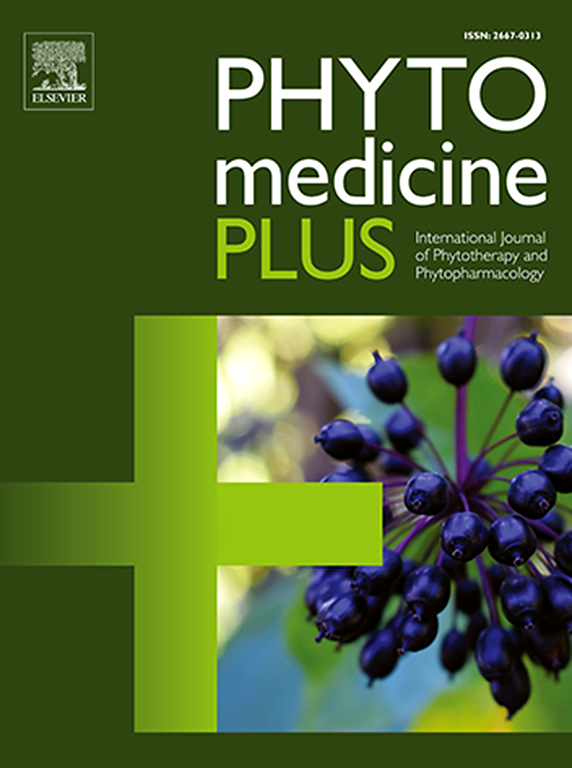抗氧化治疗外伤性脑损伤的临床前结果——系统综述
Q3 Pharmacology, Toxicology and Pharmaceutics
引用次数: 0
摘要
背景:创伤性脑损伤(TBI)是世界范围内认知和神经功能障碍的主要原因。继发性损伤过程,包括氧化应激和神经炎症,显著恶化预后。尽管抗氧化疗法在临床前研究中显示出减轻氧化损伤的希望,但缺乏对其疗效、机制和转化潜力的综合评价。本系统综述通过分析抗氧化干预TBI的全球临床前证据来解决这一差距。方法按照PRISMA 2020指南,在Web of Science、Scopus和PubMed上进行系统的文献检索,检索词为“创伤性脑损伤”和“抗氧化剂”。检索到的记录分两个阶段进行删除和筛选:标题/摘要审查,然后根据预定义的资格标准对全文进行评估。研究人员纳入了61项临床前研究,研究了抗氧化干预对TBI动物模型的影响,报告了与氧化/炎症生物标志物、组织病理学改变或功能恢复相关的结果。结果纳入的研究主要来自中国(31.1%)和美国(24.6%)。以大鼠(63.9%)和小鼠(36.1%)为主要动物模型,以雄性为主(84.8%)。控制性皮质冲击(CCI)模型是诱发TBI的主要方法(59.7%)。抗氧化剂,如白藜芦醇、虾青素和n -乙酰半胱氨酸,持续降低氧化应激标志物,包括丙二醛(MDA),增加内源性抗氧化酶,如超氧化物歧化酶(SOD)和过氧化氢酶(CAT)。组织学分析显示神经元变性减少,海马完整性改善。结论本文综述了抗氧化剂在创伤性脑损伤中的临床前证据,强调了其机制和治疗潜力。这些发现弥补了翻译理解上的差距,并强调了标准化、性别平衡和临床相关研究的必要性。本文章由计算机程序翻译,如有差异,请以英文原文为准。
Preclinical outcomes of antioxidant therapy in traumatic brain injury-a systematic review
Background
Traumatic brain injury (TBI) is a major cause of cognitive and neurological disability worldwide. Secondary injury processes, including oxidative stress and neuroinflammation, significantly worsen outcomes. Although antioxidant therapies have shown promise in preclinical studies for mitigating oxidative damage, a comprehensive synthesis evaluating their efficacy, mechanisms, and translational potential is lacking. This systematic review addresses this gap by analyzing global preclinical evidence on antioxidant interventions in TBI.
Methodology
A systematic literature search was performed in accordance with PRISMA 2020 guidelines across Web of Science, Scopus, and PubMed using the terms “traumatic brain injury” AND “antioxidant.” Retrieved records were deduplicated and screened in two stages: title/abstract review followed by full-text assessment against predefined eligibility criteria. Sixty-one preclinical studies investigating antioxidant interventions in animal models of TBI, reporting outcomes related to oxidative/inflammatory biomarkers, histopathological changes, or functional recovery, were included.
Results
Included studies originated mainly from China (31.1 %) and the United States (24.6 %). Rats (63.9 %) and mice (36.1 %) were the predominant animal models, mostly male (84.8 %). The Controlled Cortical Impact (CCI) model was the primary method for inducing TBI (59.7 %). Antioxidants such as resveratrol, astaxanthin, and N-acetylcysteine consistently reduced oxidative stress markers including malondialdehyde (MDA) and increased endogenous antioxidant enzymes like superoxide dismutase (SOD) and catalase (CAT). Histological analyses revealed decreased neuronal degeneration and improved hippocampal integrity.
Conclusion
This review synthesizes preclinical evidence on antioxidants in TBI, highlighting mechanistic insights and therapeutic potential. The findings bridge gaps in translational understanding and underscore the need for standardized, sex-balanced, and clinically relevant studies.
求助全文
通过发布文献求助,成功后即可免费获取论文全文。
去求助
来源期刊

Phytomedicine Plus
Medicine-Complementary and Alternative Medicine
CiteScore
3.70
自引率
0.00%
发文量
178
审稿时长
81 days
期刊介绍:
 求助内容:
求助内容: 应助结果提醒方式:
应助结果提醒方式:


